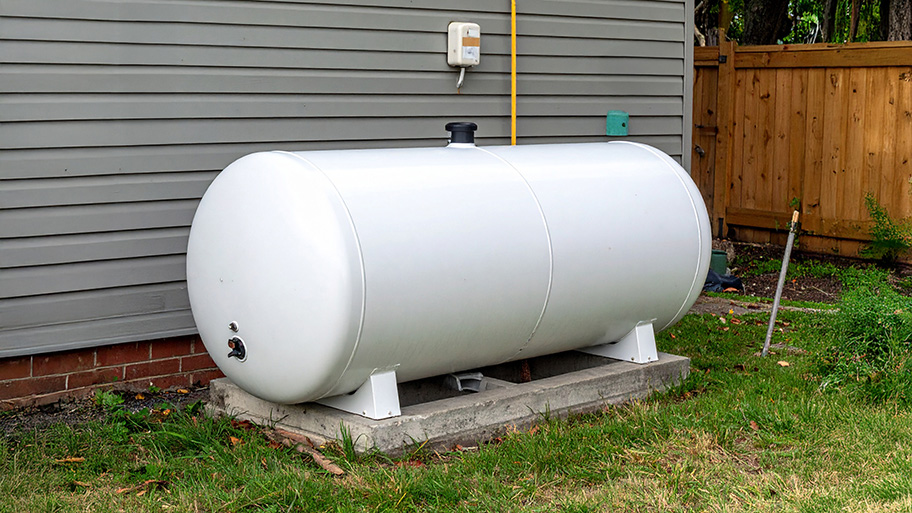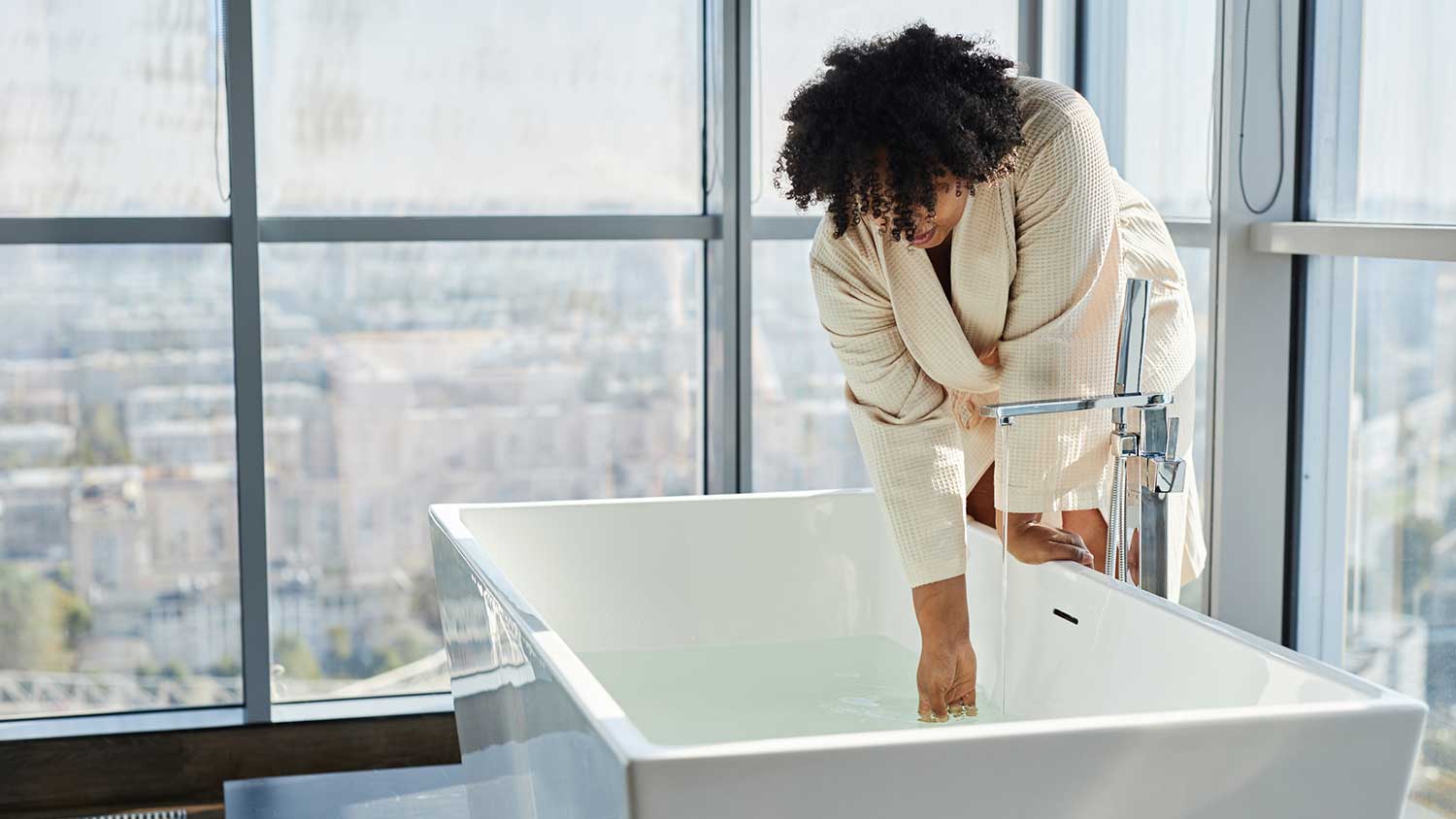
The average propane tank costs between $600 and $2,500, depending on the size, location, and more. Our expert guide explores all the factors.
Don't let your day go down the toilet by learning how to unclog one the right way


Hiring a pro to unclog a toilet costs around $85 to $600, but a plumber has the tools and expertise to safely unclog toilets and recommend ways to prevent future clogs.
Using chemical solutions to unclog your toilet can pose a safety risk and possibly damage your plumbing if used incorrectly.
When in doubt or if your toilet has major blockage, hire a local plumber to avoid plumbing issues or water damage.
There are few household situations that carry more urgency than a clogged toilet. Learning how to unclog a toilet is a life skill that you’ll undoubtedly use over and over again. It might seem as simple as grabbing the nearest plunger, but there are some details and finesse if you want to get it right the first time (and we suspect you do). Before calling a pro, here are eight methods to get things flowing again.
Occasional clogs happen for a variety of reasons as a toilet’s plumbing is complex. The most common reasons your toilet won’t stop clogging include:
Whether you’ve got a kid at home who likes to flush giant wads of paper down the toilet or someone who just uses too much, excess toilet paper can quickly clog a toilet. Switching to a thicker, higher-quality toilet paper can help, as you might use less overall, or you could switch to a bidet, which is a paper-free, eco-friendly clean-up option.
Toilet paper is the only thing that should go down your toilet. Don’t flush paper towels, menstrual products, ear swabs, or flushable wipes (despite the name, they are not in fact flushable)—all of these don’t break down easily and can quickly block the pipes. Instead of using the toilet, throw these items away in a garbage bin.
The toilet trap is a curved channel that holds standing water and prevents sewer gases from coming up into your home. Because of the design of the trap, many things can get caught in it and create a clog. Sometimes, the trap is only partially blocked, which causes the toilet to flush very slowly. Partial clogs lead to total clogs, which ultimately can overflow the toilet bowl and send dirty toilet water all over your bathroom—not an ideal situation. To fix a clogged toilet trap, first try a plunger. If that doesn’t work, use an auger. Failing this, hire a plumber near you to clear the pipes.
Other reasons your toilet is clogged might include:
A clogged toilet vent
Hard water
Broken or damaged plumbing
Damaged main sewer lines
Older, low-flow toilet model
Most often, toilets clog because something is in the way of the pipe that removes waste, keeping the water from escaping the bowl. If you notice that your toilet clogs over and over, it's smart to give a local toilet repair company a call to check for other common plumbing issues—especially if you live in a home with older plumbing.
If there’s a clog, do not keep flushing on a hope and a prayer. The water can continue to fill the bowl and end up on the floor and many other places you’d rather it wasn’t. If the water gets close to the rim, remove the tank lid and press down on the flapper at the bottom of the tank. This stops water from entering the bowl. You can also turn off the water valve behind the toilet near the base of the wall.
Toilets can clog at the best and worst of times. Here’s how to fix a clogged toilet with common tools and supplies.

Learning how to plunge a toilet may seem rudimentary, but there is a trick to it. First of all, make sure you purchase the correct plunger for a toilet. Toilet plungers are also known as flange plungers and have a large cup to seal the hole of your toilet and create pressure. The basic cup plungers, which are much smaller, are best for sink and small drain clogs.
For optimal plunger action, be sure to grab some rubber gloves and:
Lay a towel around the edge of your toilet to keep dirty water from getting on the floor.
Make sure there’s enough water in the bowl, but not too much—if the water comes up to the rim, carefully remove some with a cup and bucket. If the bowl is empty, gently press on the flushing handle to release a little water without pushing it all the way down and triggering a flush.
Place the cup of the plunger against the hole, creating as tight a seal as possible. You can tilt the handle in your direction if necessary, but don't pull it so far that it opens the seal.
Push up and down with force for 10 to 15 seconds, then check if the water has lowered in the bowl before flushing. If not, plunge for 10 more seconds and check again.
If the clog has not cleared, use the non-plunger methods below.
If you don't have a plunger on hand, sometimes changing the water's temperature is all you need to release a clog.
Heat up water on the stove to just below boiling, then let the water cool for a moment or two—boiling water can cause the bowl's porcelain to crack.
Carefully pour the water into the toilet bowl, and let it sit for several minutes.
If the water drains while you wait, you have partially or fully removed the clog.
Test the toilet by flushing, but be ready to close the flapper if necessary.
Dish soap is gentle on materials like porcelain and can break down fats and grease. Therefore, dish soap can do just as strong a job on dishes as on drain clogs. Here's what do to:
Measure 1/2 cup of gentle dish soap, then pour the soap into the toilet bowl, ensuring there is enough water to carry it down the drain. If not, add several cups of warm water to the bowl.
Let the soap sit for 10 minutes. You can pair this method with the warm-water trick for extra effectiveness.
Assess if the water in the bowl has lowered, and if so, test with a flush.
Unclogging a toilet without a plunger is possible, especially when using the same approach with different tools. In this method, you'll need an empty 2-liter soda bottle. Wear gloves while following these steps:
Fill the 2-liter bottle with warm water, then flip the open bottle over and quickly insert it into the toilet drain.
Squeeze the water out of the bottle with force, sending water into the pipe. This may send water back into the bowl, so be careful not to let it overflow.
If the pressure sends the water down the drain, you're ready to flush.
Similar to our trusty soap method, good old white vinegar and baking soda can break down clogs in a similar manner. Here's what to do:
Lay down towels around the toilet in case of an overflow.
Pour 1 cup of white vinegar down the drain, and follow it with 1 cup of baking soda—be prepared for the mixture to foam quite a bit.
Let the mixture sit for one minute.
Pour warm water into the bowl to check if the clog is now clear.
Using a toilet auger is a helpful skill when difficult clogs don't respond to simple mechanical methods. Also called a toilet snake, an auger costs between $10 and $100, depending on its complexity and size. While you should always follow the directions on your specific model, here's how to use an auger:
While wearing gloves, insert the auger into the pipe so that the rubber joint sits at the entrance of the pipe.
Push the extendable arm into the pipe by turning the handle slowly and steadily. Don’t force the auger into the toilet or use unnecessary pressure.
Wiggle and turn the cable around in the tube to break up the blockage.
Slowly remove the auger as well as any large debris that has been dislodged during the process.
Flush the toilet slowly to check if the water clears.
As a plumber myself, my personal recommendation for clearing a clogged toilet is to skip all other steps and go straight for the closet auger (toilet snake). It is important to learn how to use it properly but it’s a lot harder to cause a leak by improperly using a closet auger than it is with a misused plunger.
Using a metal clothing hanger to unclog a toilet is a famous DIY in a pinch, but you have to be careful not to scratch or crack the inside of your toilet.
Unravel a metal hanger into a long, curved wire.
To prevent damage, tightly wrap a plastic shopping bag around the end of the unrolled hanger and bend the tip so there is no sharp end.
Gently push the hanger and bag into the toilet to remove debris close to the entrance of the pipe.
If the clog is further down the pipe, you'll need an auger or plunger. Don't risk pressing this tool too far into the toilet and causing further damage.
While this should be a last resort, chemical-based uncloggers specifically made for toilets can also do the job. However, many chemicals can damage your pipes when used incorrectly, so don’t use them often. Follow the instructions on the bottle, and wait the proper amount of time—sometimes even overnight—to flush.
While you might not be able to prevent all toilet clogs, there are ways to prevent most of them, including:
Eliminating excess toilet paper use: Avoid putting too much toilet paper into the toilet at once. You might need to teach children how much is too much.
Staying on top of maintenance: Make sure the jets at the top of the toilet bowl are functioning correctly. If your toilet clogs regularly, you may need to schedule a plumber to inspect the toilet for a deeper plumbing problem.
Keeping out non-flushables: Toilets are for toilet paper only. No flushable wipes, paper towels, napkins, or anything else should go down the pipes. If you have children who like to put things down the toilet, consider a toilet lid lock.
If you’ve tried everything on our list, it’s time to call a local plumber. You may also want to call in a pro if the toilet keeps clogging despite taking preventative measures. Again, there could be a deeper problem or a deeper clog that you’ll need a pro to remove.
The cost range for a plumber to unclog a toilet is $85 to $600, depending on the severity of the clog.
From average costs to expert advice, get all the answers you need to get your job done.

The average propane tank costs between $600 and $2,500, depending on the size, location, and more. Our expert guide explores all the factors.

Whether you’re changing your home’s floor plan in a remodel or just replacing old, worn-out plumbing, this guide will help you estimate the cost of repiping a house.

This guide to toilet installation cost covers what you can expect to pay when adding a new toilet to an existing or new bathroom.

Most homeowners will eventually need to replace bathroom hardware. This guide breaks down bathtub faucet installation costs, so you can upgrade your bathroom.

Copper is prone to leaks from corrosion, particularly pinhole leaks. This guide will show you how to fix a copper pipe leak in seven different ways.

Before purchasing and installing a new toilet, you need to know the toilet rough-in measurement to ensure proper integration. Here’s how to get it done.